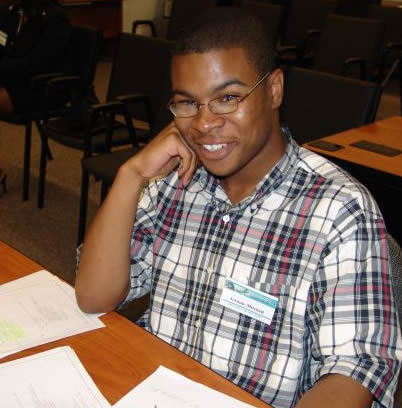
Statement
of Purpose |
As an undergraduate student researcher for the Center for Excellence in Remote Sensing Education and Research (CERSER), I have participated in a number of projects related to remote sensing and intelligent systems. I spent two summer internships at the University of Kansas’s Center for Remote Sensing of Ice Sheets (CReSIS). At the University, I worked on a project to analyze a Java programming language to acquire an understanding of the basic issues involved in the design and implementation of multiagent system. I have created Unified Modeling Language (UML) class diagrams with eXtensible Markup Language (XML) and the Foundation for Intelligent PhysicalAgents (FIPA) regulations to represent how software agents respond to different requests while, providing necessary data to satisfy heterogeneous tasks. The class diagrams planned for modifications and additions to CReSIS’s multiagent system for enhanced functionality while supporting remote sensing field tests in Greenland and Antarctica. I have also improved the development of SmartXAutofill, an intelligent data entry assistant, for XML and other text forms. Initially, SmartXAutofill only predicted, suggested, and filled-in values for the first and last input data fields, so I modified a Java program to function on all input fields. I tested the technology for data abnormities and correctness in data transmitted by sensors and other instruments. SmartXAutofill was applied to data gathered from field tests in Antarctica and Greenland to detect erroneous information. I have tried to apply my experiences with intelligent systems to practical remote sensing applications. At Elizabeth City State University (ECSU), I participated in a project to determine multi-decadal temperature trends across the Antarctic continent from temperatures recorded by distributed Automatic Weather Stations and brightness temperature data collected by the Special Sensor Microwave Imager (SSM/I) aboard the Defense Meteorology Satellite Program (DMSP) polar orbiting satellites. At the University of New Hampshire, I participated in a prestigious remote sensing program, Research and Discover, that allowed me to devise a new melt detection technique from SSM/I passive microwave brightness temperatures using MATLAB mathematical software on a UNIX platform to produce an approximate tally of melt days in Greenland from 1992 to 2005 in order to quantify global climate change in the Artic. Motivated by my academic and summer experiences, I desired an opportunity for field research that reflected my interests; this was realized by my participation in the United States Antarctic Program (USAP) sponsored by NSF through the CReSIS At the West Antarctic Ice Sheet (WAIS) Divide, I worked with distinguished scientists on issues concerning mass balance of ice sheets to better understand global climate. My original responsibility on the continent centered on the operation of a multiagent architecture embedded on an autonomous robotic rover to host a Synthetic Aperture RADAR (SAR) to gather data. Due to problems with the robotic rover, my responsibilities were broaden to include assisting in the operation of software for planewave RADAR measurements of the annual accumulation of snow and collecting temperature measurements to be correlated with data from the RADAR. I also generated echograms of the data gathered at the test site to visualize changes made in the snowpack using MATLAB; these tasks strengthened my beliefs on the “patience of science” – an idea that is needed when one does research. I try to plan my life accordingly to my current goal. Presently, the most important near-future goal I have set is obtaining a Ph.D in computer science, specializing in intelligent systems with environmental remote sensing applications. Earning a doctorate would give me the tools for an in-depth approach to solving current issues in my research area. Looking ahead beyond graduate school, I see myself developing intelligent computer programs to help scientists better understand our planet as it relates to global climate change; thus, being a catalyst for improvement in the scientific and technological communities.
|
